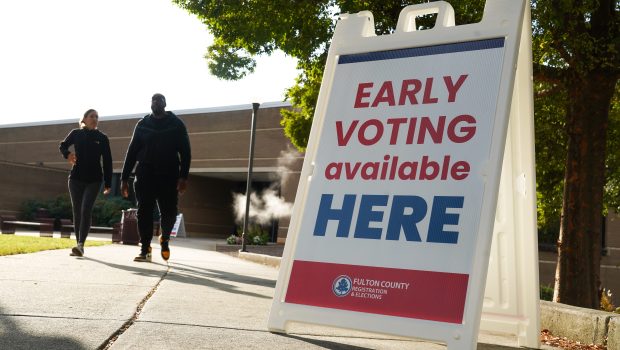What Are the Swing States? What it Means & Why They’re Called ‘Battleground’ States

The states considered to be the battleground places differ between elections. Learn how a swing state is determined and which ones are relevant in the 2024 election.
In every U.S. presidential election, the final result comes down to the swing states. The states, which are also labeled the “battleground states,” differ between elections. Most of them tend to be in the southeast of the country, while others are located in the Midwest. So, which ones are the swing states for this year’s election?
As Vice President and Democratic candidate Kamala Harris and Republican candidate Donald Trump vie for the Oval Office, we’ve detailed everything you need to know about swing states, below.
What Is a Swing State?
A swing state is any U.S. state that could carry the vote by either the Democratic or the Republican presidential candidate. Polls must be close enough for the state to be considered split.
Swing states are different from others that are considered as “red” or “blue” states, where the major party candidate tends to have the lead.
Forget what the #polls say, and go VOTE!!!💙🇺🇸#HarrisWalz2024 #NotGoingBack pic.twitter.com/HpYCBMfkfK
— Dena Grayson, MD, PhD (@DrDenaGrayson) November 3, 2024
Which Ones Are Swing States?
Swing states differ between elections due to changes in demography, politics, economics and differences between candidates. Florida used to be a battleground state because polls would be close. However, as of 2024, the state has leaned toward the Republican Party.
For the 2024 election, the swing states are Arizona, Georgia, Nevada, North Carolina, Michigan, Wisconsin and Pennsylvania, according to multiple outlets. Though Georgia and North Carolina were considered “red states” in the past, polls have shifted in recent years.
Who Is the Projected Winner of the 2024 Election?
The president-elect of the 2024 election will win by a slim margin, multiple pollsters agree. According to FiveThirtyEight’s most recent projection, Harris is expected to win “50 times out of 100” in its simulations, and Trump is projected to win “49 times out of 100.” The website used 1,000 simulations to determine the projected winner, with 503 ending with Harris, 495 in Trump’s favor and two simulations ending up with no winner.